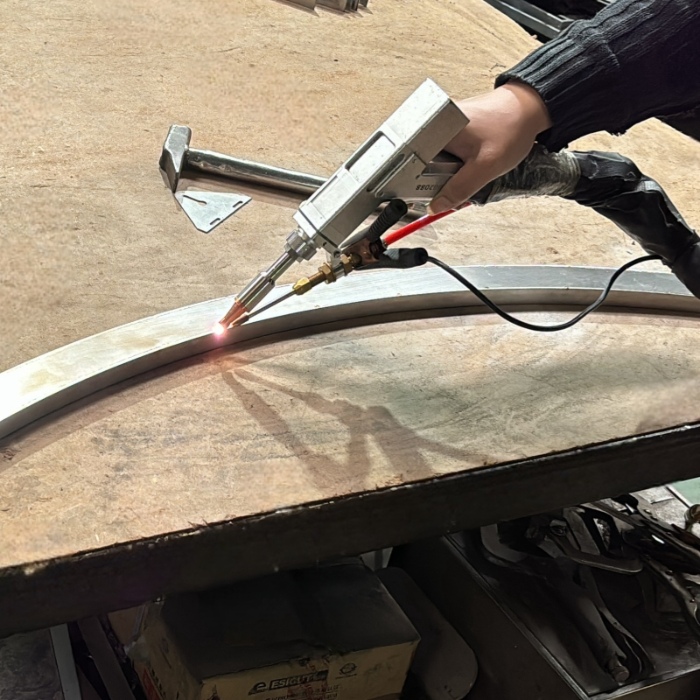Types Of Sheet Metal Fabrication Techniques, Part Two
Types Of Metal Fabrication Services
Welding
Welding serves as a foundational process in sheet metal fabrication, where two pieces of metal are heated at a joint until they merge, creating a strong and seamless connection. Compared to riveted joints, welded joints offer superior strength and reduced weight, making them suitable for a wide range of applications.
Various welding techniques are employed, including laser welding, TIG welding, and MIG welding, each with its own set of advantages and limitations. Laser welding, for example, offers rapid speed, deep penetration, and minimal distortion, although it requires precise control and may incur higher assembly costs. TIG welding excels in producing high-quality welds with smooth finishes and minimal cleaning requirements, but it tends to be slower and less efficient for large-scale production. On the other hand, MIG welding is known for its efficiency and cost-effectiveness, although the resulting welds may require grinding due to surface roughness.
While no welding method is perfect, skilled welders adeptly leverage the strengths of each technique to tailor solutions that meet specific production demands, striving for excellence and optimal outcomes. Through their expertise and precision, they ensure the creation of durable and reliable welded joints that meet the highest standards of quality and performance.
Laser Cutting
In the realm of sheet metal manufacturing, laser cutting has emerged as a leading-edge technique. This cutting-edge method utilizes a high-powered laser beam to precisely cut through flat and thin metal sheets with unparalleled accuracy. Guided by advanced optical and computer numerical control (CNC) technologies, laser cutting ensures exceptional precision in fabricating parts.
The advantages of laser cutting are numerous. Firstly, it significantly enhances efficiency in new product development by eliminating the need for molds and reducing setup time. Its rapid programming and cutting speeds expedite the production cycle of components, thereby boosting overall manufacturing efficiency.
Moreover, laser cutting delivers impeccable results. The narrow cutting slit and smooth, slag-free cutting surface result in aesthetically pleasing, burr-free incisions. Its high precision and automation capabilities allow for seamless automatic cutting and nesting, further optimizing production processes. Additionally, the simplicity of the CNC system makes sheet metal processing more convenient, enhancing production efficiency.
In summary, laser cutting stands out in sheet metal manufacturing due to its precision, efficiency, and impeccable results. With its advanced technology and streamlined processes, laser cutting continues to revolutionize the industry, driving innovation and enhancing productivity.
Polishing
Metal polishing is a meticulous process aimed at refining the surface of metal objects to achieve a smooth and glossy finish. It involves the use of specialized tools, equipment, and abrasive materials to remove imperfections, scratches, and other surface defects from metal surfaces. The process begins with the selection of appropriate abrasives, such as polishing compounds or abrasive pads, based on the type of metal and the desired finish.
During metal polishing, the metal object is secured in place, and the polishing tool is applied with controlled pressure and precision movements to the surface. This action creates friction between the abrasive material and the metal, resulting in the removal of surface irregularities and the gradual refinement of the surface texture.
As the polishing progresses, finer abrasives are used to achieve higher levels of smoothness and shine. This may involve multiple polishing stages, each aimed at progressively refining the surface finish. Additionally, lubricants or cooling agents may be used to prevent overheating and to facilitate the polishing process.
Metal polishing requires skill, patience, and attention to detail to ensure uniformity and consistency in the final finish. Skilled craftsmen or metalworkers often perform metal polishing by hand, employing their expertise to achieve the desired results. However, automated polishing machines are also utilized in industrial settings for large-scale metal polishing operations.
Overall, metal polishing plays a crucial role in enhancing the appearance, quality, and functionality of metal objects. In sheet metal fabrication and sheet metal manufacturing, it is a very important part of metal surface treatment, and the polishing process makes the subsequent process better.
In the process of sheet metal manufacturing and sheet metal fabrication, each step of the operation is coordinated with each other, so before the production begins, the worker must carry out a step of the drawing concept and consider which process to use. The processing process is complex and cumbersome, so the familiarity of the worker’s operating technology and the machine must be experienced.
